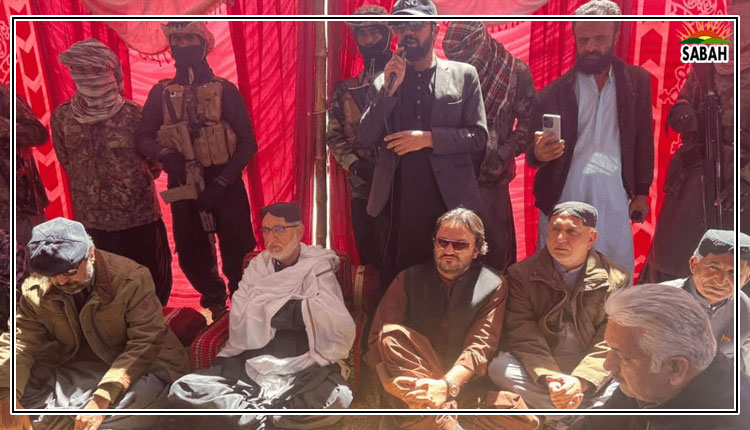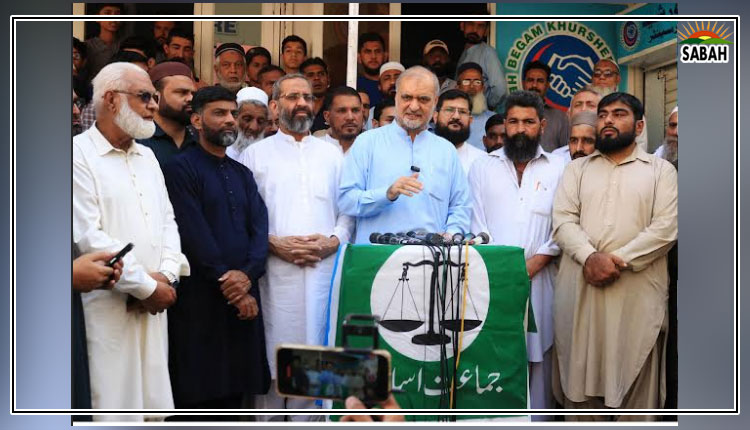Oppenheimer’s legacy۔۔۔۔Aizaz Ahmad Chaudhry
THE worlds first nuclear bomb was dropped on Hiroshima on Aug 6, 1945, killing over 100,000 residents. The second bomb followed three days later, and killed nearly 80,000 in Nagasaki. The scale of destruction was so vast, so indiscriminate that no country not even the US, which had dropped the two bombs ever used nuclear weapons after the two events. Oppenheimer, the American scientist who oversaw the creation of the two bombs, came to regret his awful legacy. He, as indeed the whole world, realised that a nuclear war would mean global annihilation. Hence, the Nuclear Non-Proliferation Treaty (NPT) was signed in 1968 as a binding commitment by all state parties to disarm (nuclear weapons) in due course, not share nuclear technologies in the military domain, and encourage peaceful uses of nuclear energy.
The NPT offered a grand bargain. Five countries, which by then had already developed nuclear weapons the US, UK, France, the (former) Soviet Union and China were recognised as nuclear weapon states. All other countries that joined the NPT agreed not to develop nuclear weapons on the assurance that the NWS would pursue disarmament (Article 6) and help in sharing nuclear technologies for civilian purposes (Article 4).
In reality, no NWS has worked towards complete disarmament of its nuclear arsenal. The US and Soviet Union did work towards reducing nuclear weapons through treaties such as SALT, START and the INF. But the gains were offset by the development of new and advanced, more potent and precise nuclear weapons by the NWS. According to the 2023 yearbook launched by the Stockholm-based research institute Sipri, the number of operational nuclear weapons has now started to rise because of the NWS modernisation and expansion plans. The total global inventory was estimated at 12,512 warheads, of which 3,844 were deployed with missiles and aircraft.
The world is increasingly overlooking the possibility of a nuclear war.
A major reason for the failure of NPTs grand bargain was the discriminatory nuclear regime it offered. The world was divided into nuclear haves and have-nots. The frustrations over the lack of progress towards disarmament of nuclear weapons, 90 per cent of which are in the possession of the US and Russia, led many states to adopt the Treaty on Prohibition of Nuclear Weapons (Ban Treaty) in 2017. All five recognised NWS have opposed this treaty citing security concerns.
It appears that the world is increasingly overlooking the possibility of a nuclear war. The Sipri report indicates that around 2,000 nuclear weapons are in a state of high operational alert; most belong to Russia or the US, The NWS have also hardened their rhetoric, issuing at times explicit or implicit threats about potentially using nuclear weapons. There is, thus, a growing risk that nuclear weapons might one day be used again. President Vladimir Putins decision to station tactical nuclear weapons in Belorussia is a case in point. He has also raised the alertness of Russian nuclear forces.
The risks of a nuclear confrontation are no less in South Asia. Indias Cold Start Doctrine (the ability to launch cross-border offensive operations in the shortest possible time) had sought to dent Pakistans nuclear deterrence. In 2019, India tried to create a new normal in South Asia by carrying out a surgical strike against Pakistan. Last year, Indias nuclear-capable supersonic cruise missile, BrahMos, was accidentally launched and fell close to a Pakistani town. On both occasions, a potential crisis was averted thanks to Pakistans restraint. Another accidental BrahMos launch close to the border was reported in the beginning of this year. Indian leaders have also created ambiguity about their commitment to no first use and are resorting to the dangerous mantra of massive retaliation.
To maintain its nuclear deterrence, Pakistan has responded to these developments by announcing its full-spectrum deterrence (developing capabilities from tactical to operational to strategic levels). A former director general of the Strategic Plans Division recently spoke about the development of weapons in all ranges.
It is time for India and Pakistan to take steps to stop the escalation in hostility before it reaches the point of a possible nuclear confrontation, the impact of which would be unimaginable. It would be prudent for India not to weaken nuclear deterrence and strategic stability in South Asia in the larger interest of regional peace. Alongside, it would greatly help if communication channels remain operative. An even better option is to revive the bilateral dialogue aimed at addressing outstanding issues, particularly the Kashmir dispute, and resurrect the expert group which had worked for years on conventional and nuclear confidence-building measures.
The writer is a former foreign secretary and author of Diplomatic Footprints.
Courtesy Dawn, August 13th, 2023












